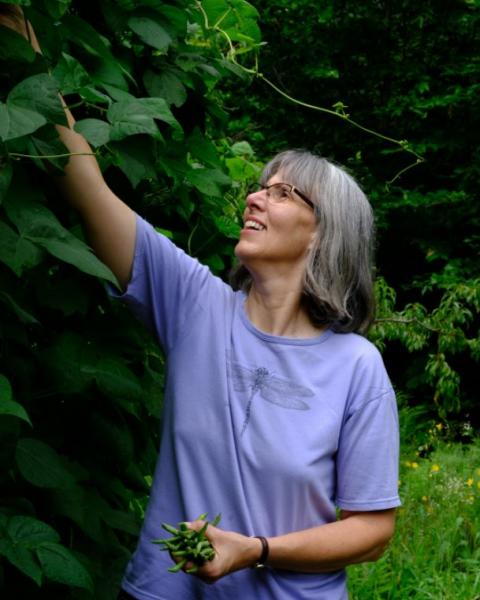Germination
8-10 days
Planting
Watermelons are tender annuals that require warm temperatures to germinate and fruit. Sow seeds directly into garden soil when all danger of frost is past. Plant ½” deep, 3 seeds per hill. Space hills 12-18” apart with 6’ row centers. Thin to one strong seedling in every hill. Plants may be started indoors for transplanting. Sandy, well-drained soils are best.
Harvesting
95-100 days. Fruit is ripe when the nearest tendril is brown and dry; when the spot that touches the ground turns from white to yellow; when the blossom end is soft; and the fruit sounds hollow when tapped. Cut the fruit from the vine with a sharp knife or pruners.
Description
Moon and Stars watermelon sports dark green skin speckled with yellow spots of varying sizes. The vine is compact, making it ideal for small gardens. The flesh of the fruit is commonly red, yellow, or orange. The rind is thick and good for pickling, and the flesh has a sweet flavor. The fruit can grow up to 40 pounds under ideal conditions, though 10-15 pounds is more commonplace.
Profile
Planting Depth: 1/2 inch
Soil Temperature: 60-70℉
Germination: 8-10 days
Plant Spacing: 12-18 inches
Row Spacing: 6 feet
Maturity: 95-100 days
Soil: Moist, well-drained, slightly acid
Growing Habit: Vine
Sun: Full sun (minimum 6 hours)
Fruit Size: 10-15 pounds
History
Moon and Stars watermelon is one of the most popular heirloom varieties in the United States. Commercial rights were sold to Peter Henderson & Company of New York in the 1920s. The creator of the plant is unknown, but it was originally called “Sun, Moon, and Stars.” By the 1970s it had almost completely disappeared from American Gardens, until it was “rediscovered” and included in the 1981 Fall Harvest Edition of Seed Saver’s Exchange.
Connection to Extension
Moon and stars watermelon is one of the seeds offered by Strawbery Banke Museum through our free seed for education program.
This planting guide was created through partnership among Strawbery Banke Museum, New Hampshire School & Youth Garden Network, New Hampshire Master Gardener Alumni Association and UNH Extension Master Gardeners.
